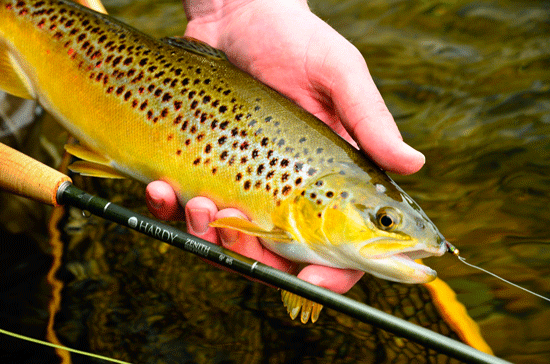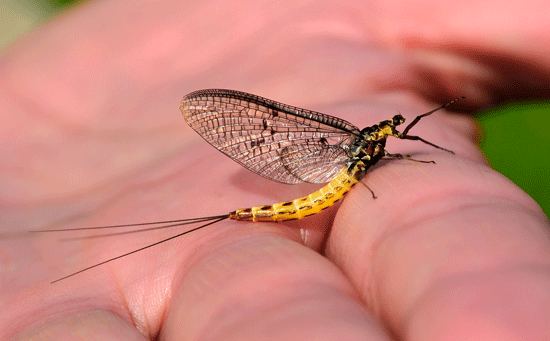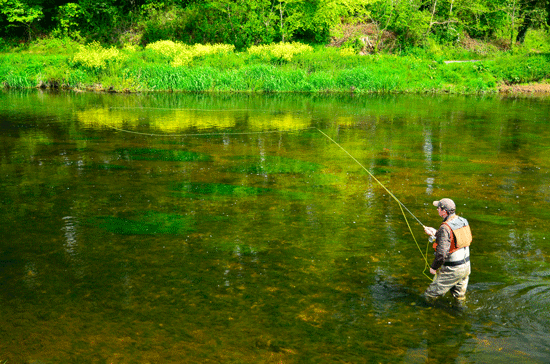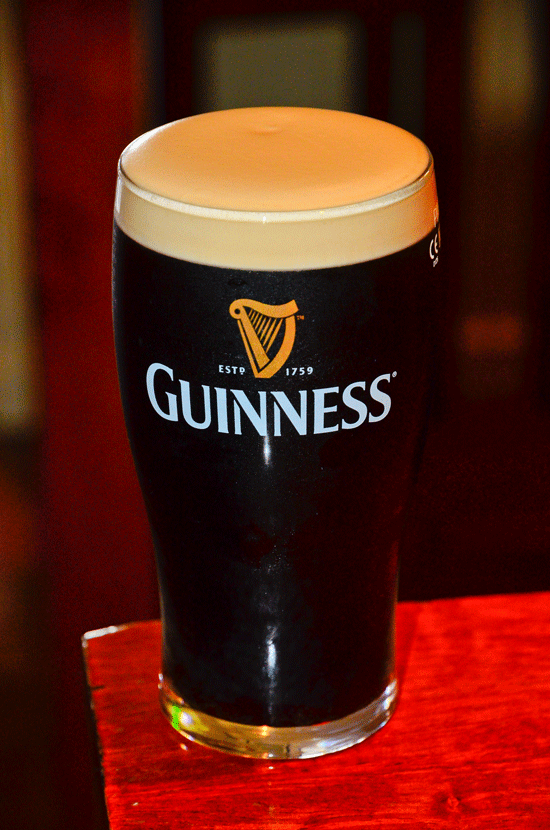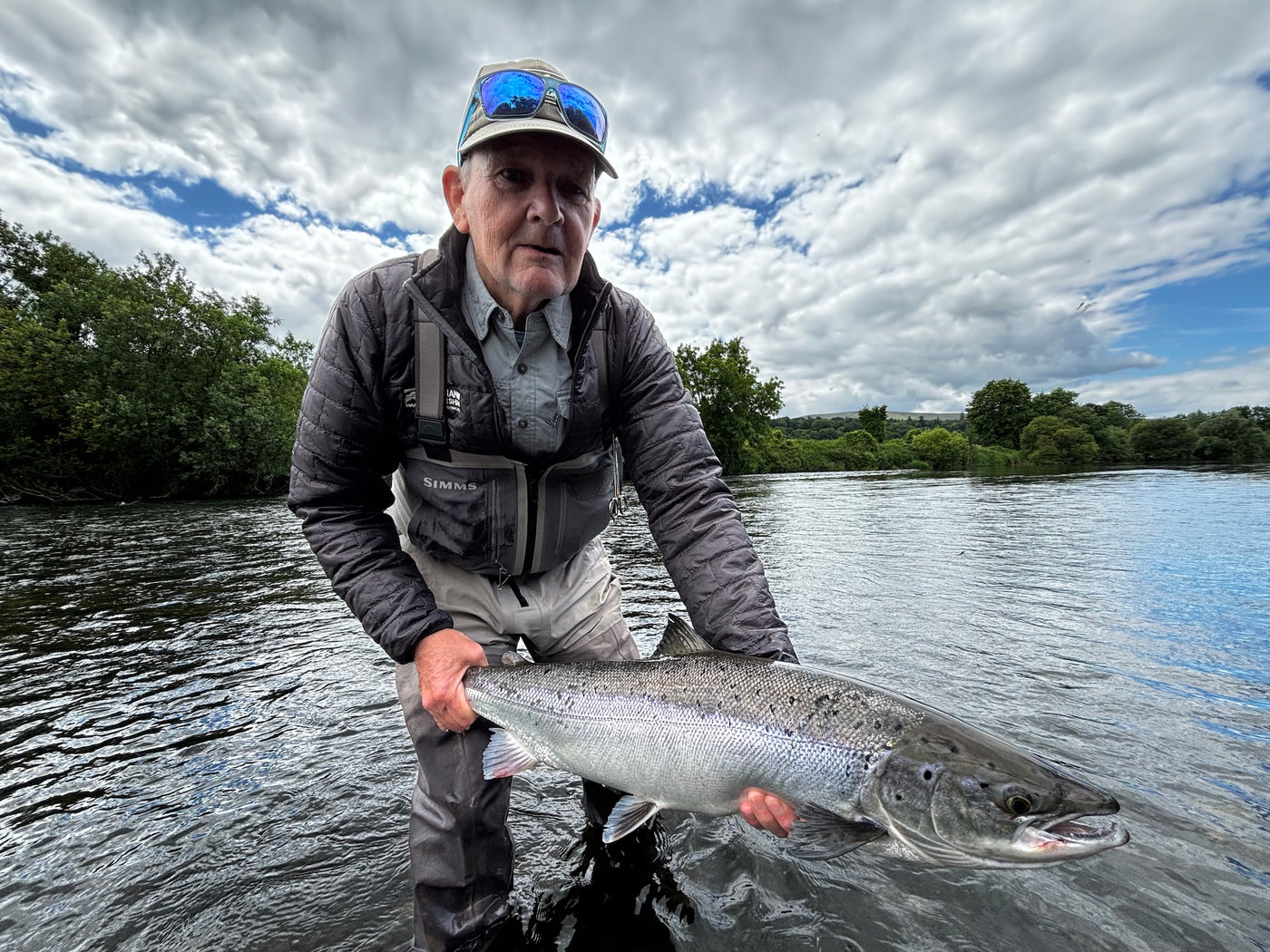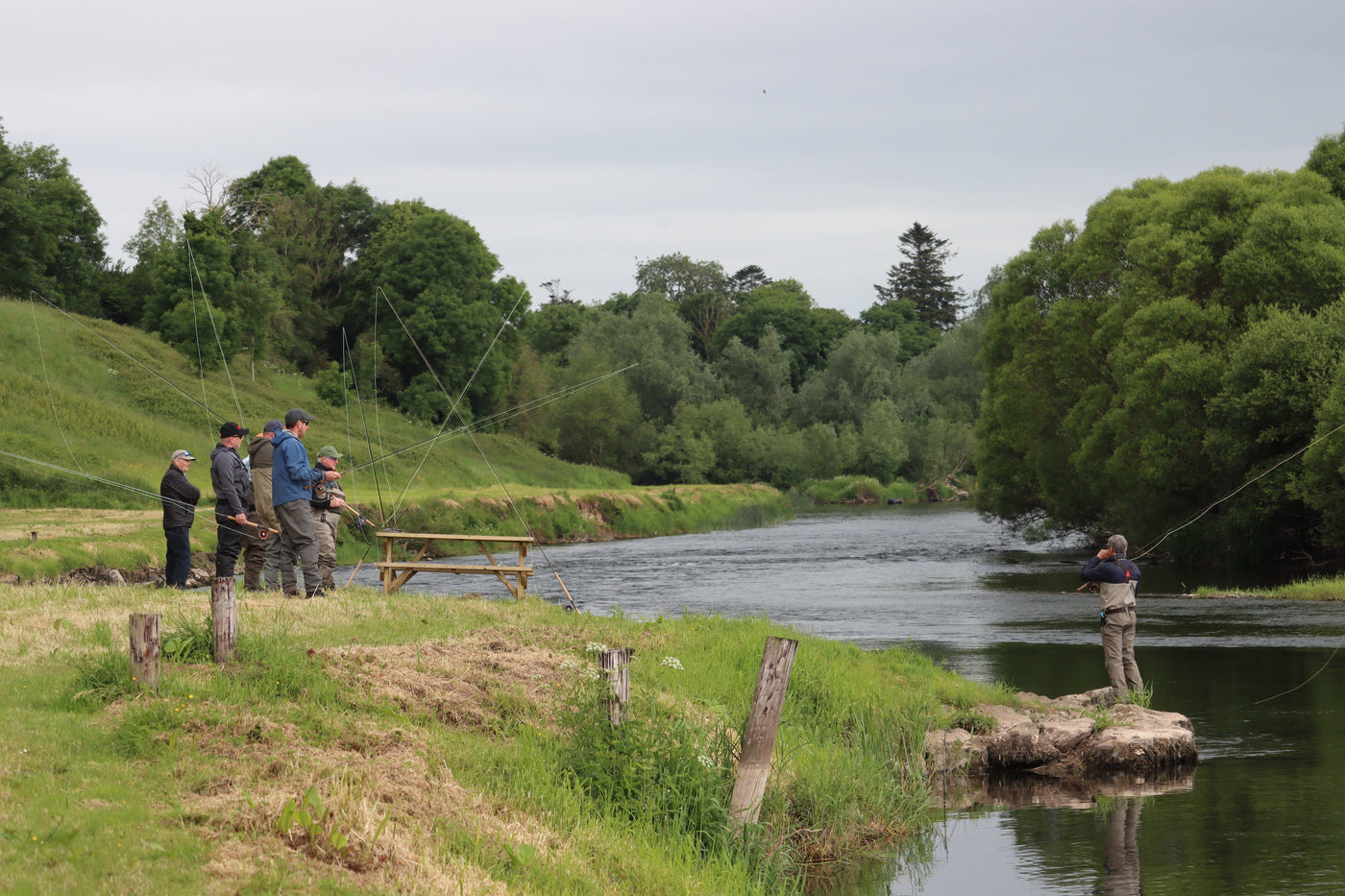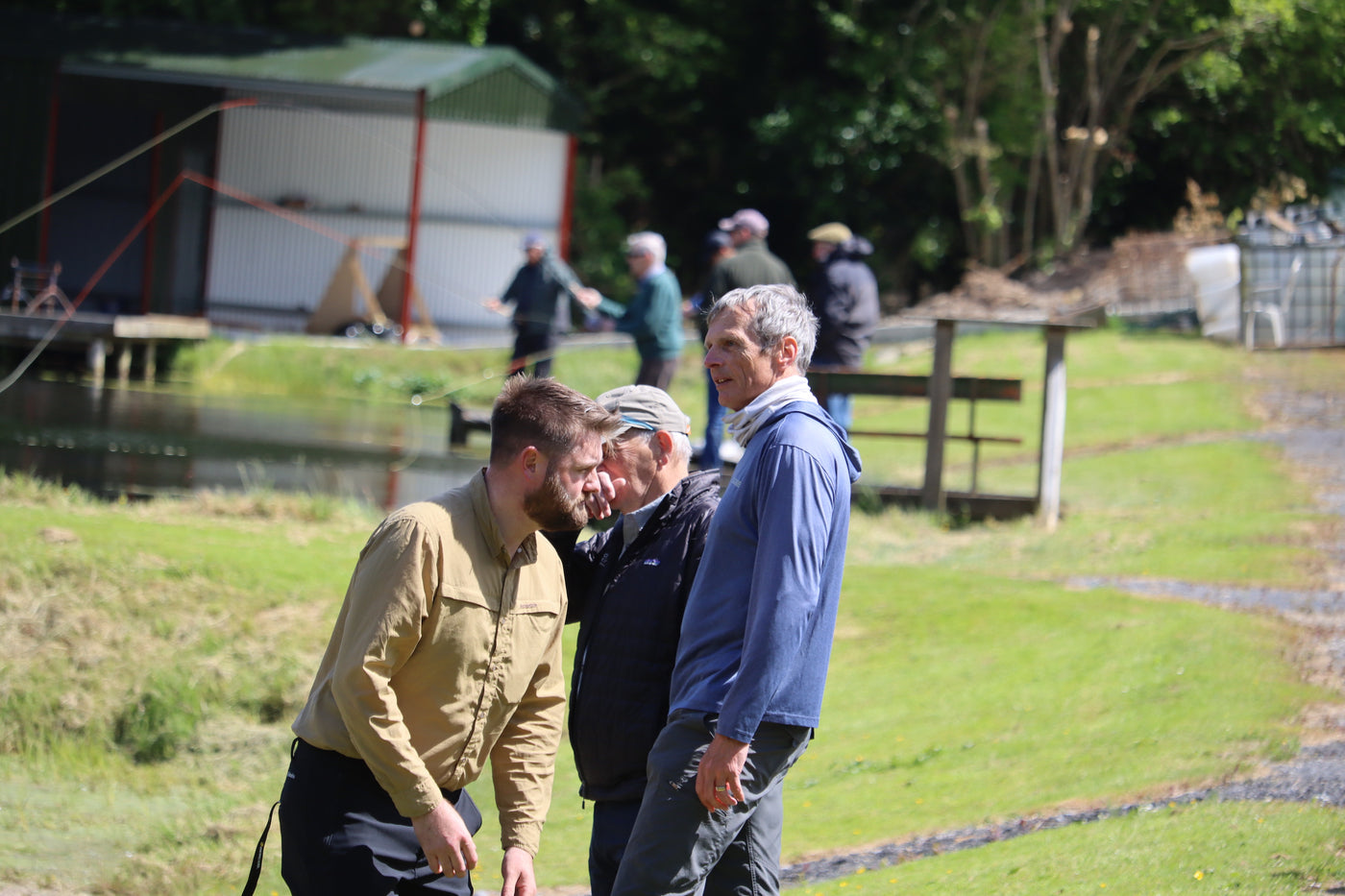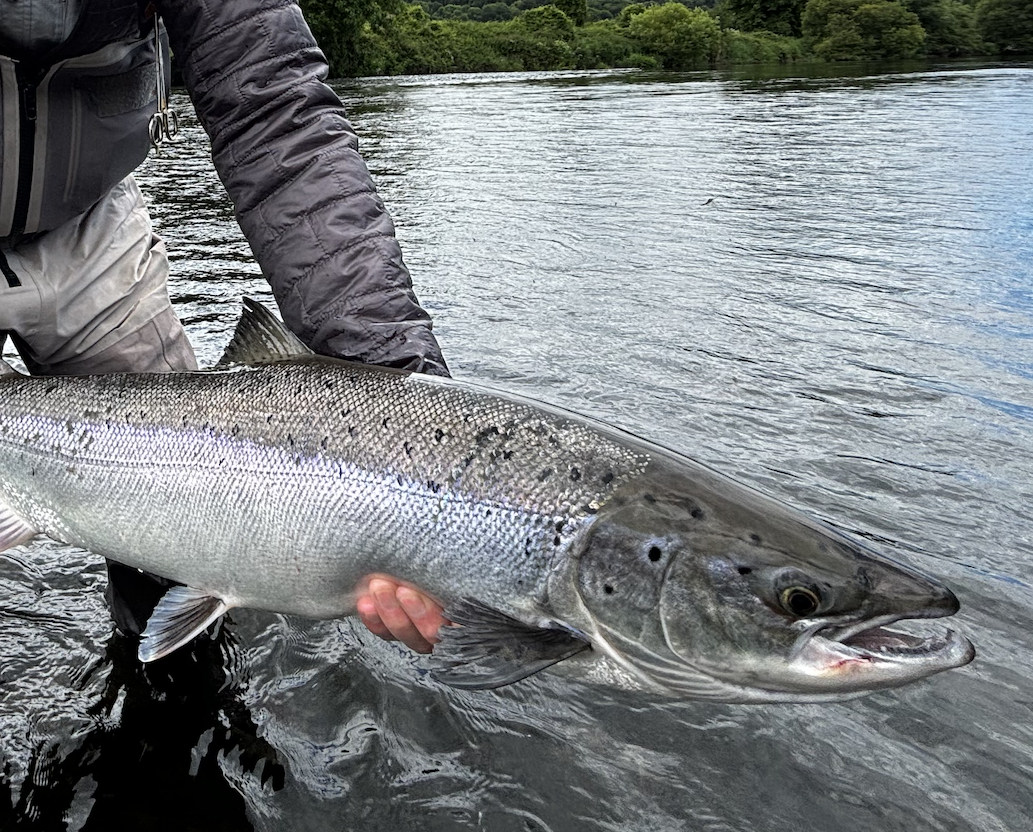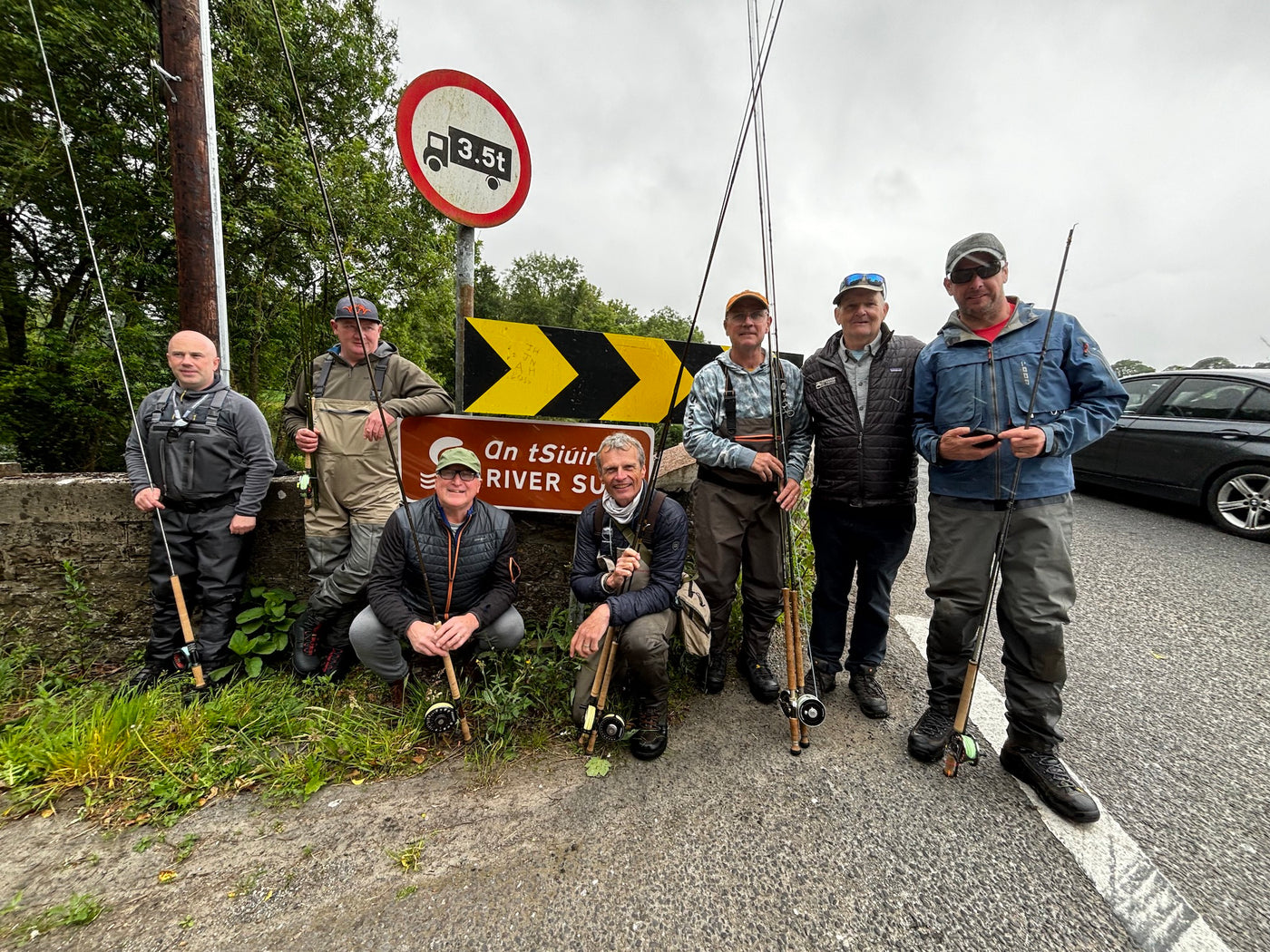In Search of Danica
below are some excerpts from an article by former fly fisherman editor John Randolph.Highly colored, wild browns provided daylong fishing on the best Irish streams, especially fishing nymphs on wadeable freestoners such as the Rivers Suir and Boyne. David Lambroughton photo
“The Mayfly fortnight used to be said, especially by the older school of authors, to be a sort of carnival—in fact some canonized by the name of St. Mayfly; and to read their glowing sketches one would fancy that it would be only necessary to cast the fly in any slipshod fashion anywhere, to find as a result that all the big fish in the river were competing in a race to get it; and anglers, especially of the younger school, reading these exaggerated accounts, are in the habit of going down to the river buoying themselves up with hopes of great sport and easy fishing.” Frederick M. Halford, Dry Fly Fishing.
The upper river Suir (pronounced sir) in Ireland is one of the good riverine habitats for danica–wide, slow, and soft, gravelly-bottomed in many reaches (ideal for the bottom-burrowing danica nymph), with mid-May hatches–but finicky Irish weather makes hitting a strong hatch that brings up the large trout much like reliably nailing a strong Green Drake spinner-fall on the East Branch of the Delaware or Penns Creek in Pennsylvania. It helps to be a regular (or resident) to get lucky. The finicky, just-right, atmospheric conditions must happen. A traveling Green Drake junky can develop an ulcer chasing fruitless anticipation, but when the planets align on certain magical evenings, the Hatch God sends us her sweetest love, the perfect rise of eager trout to nature’s most delicate water-born creature. Nothing surpasses this experience for the dry-fly purist.
I recall fishing the Mayfly spinner-fall hatch once with John Goddard on his River Kennett (England) club water. The spinners hovered and danced high over the water late that June evening. The spinner dance rose, then lowered toward the water, then rose once more. This continued as an evening chill descended on the river. The spinners continued to dance, magically, up and down and the trout hovered nervously in anticipation on their fins, just beneath the river’s surface, waiting expectantly for the final fall where the river glided through beds of green ranunculus. We stood, shuffling in wadered anticipation.
Nada. Atmospheric conditions sent a chill to the river, killing the spinnerfall and the trout feast we yearned for like hungry children peering at candy-store windows. I’ve been disappointed thus on Penn’s Creek, the Delaware East Branch, and on the soft-bottomed upper Battenkill in the late ‘50s before the Green Drake hatches finally disappeared. My list of mighta-beens is democratic and broadly geographic.
Andrew Ryan, owner of Clonanav Fly Fishing Center in Clonmel, fishes the rivers of southeast Ireland. David Lambroughton photo
Guides and Ghillies
Irish ghillies and highly educated and regulated “guides” are professionals: They exemplify why these lake anglers are among the world’s best. They speak lilting Celtic/English and are fun to fish with. However, if a trout takes your dry, lift, slip-strike slowly, but don’t say “God save the Queen”; simply whisper, “God save Ireland!”
Make a Plan
Why are you going to Ireland. . .for fly fishing, or vacationing or both? Is your trip for fly fishing exclusively or fly fishing/historical-cultural, or historical-cultural/fly fishing? The best way to visit Ireland is to do it all, with companion(s) or wife and family: 80% historical/cultural and 20% fishing. Your 20% fishing can happen on the evening rises on the best trout streams (or lochs). In any case, your trip research is worth more than the cost of your trip because it can forestall a frustrating host of mistakes. The two large river systems to research for trout dry-fly (and nymph) fishing are the Boyne and Suir and the tributaries. Do some online research of the midland lakes for best danica mid-May hatching opportunities. Once you chose your region for your touring, chose a fly shop or guide/ghillie in that region for your fishing and research them online before booking.
If you want Atlantic salmon fishing, research the rivers Suir, Blackwater, or Moy, especially for September fishing, the peak month when a good two-handed-rod salmon angler can expect as many as 10-20 hook-ups/day on the best beats, with the right water conditions and a knowledgeable guide or ghillie (or zero without the above). Rates range, depending on month and river, from 50 to 150 EU/day.
FLY FISHERMAN editor emeritus John Randolph releases a brown on the River Nire in southeast Ireland. David Lambroughton photo
Common Sense Booking Advice
If your trip is for fly fishing exclusively, the following advice is valuable, especially if you go for salmon fishing.
*Save money: Change dollars to Euros at your home AAA before going and in reverse at an airport monetary exchange on your return.
*Go to the Irish fly-shop online sites for real-time blogs and twitter updates, hatch charts, and fishing conditions.
*For salmon fishing, if you can’t cast with a two-handed rod, get professional instruction on the water, and practice the techniques (on rivers) thoroughly before you depart. Don’t expect to learn casting and line/fly presentations after you get to Ireland. You cannot learn two-handed casting and line handling quickly.
*Expect to carry a rod case for your rods (and pay $60—2012 rates–for the extra luggage both ways), unless you rent the rods from the shops or outfitters when you arrive. Renting makes good sense since the rental rods, reels, and lines are of high quality, and you can request what you want in advance.
*Inquire what the salmon catch rate is per rod/day during the week you expect to be fishing on the specific rivers and beats you chose. Always ask what technique was used to catch the salmon: fly only, spin, prawn, spinner? Ask: “Is the water fly-only catch-and-release?” Many rivers—and beats—allow various means of angling. Be sure to seek out fly-only, catch-and-release-fishing rivers and beats.
*Ask questions when you book your ghillie or guide: Will he pick you up at the airport? Is lunch provided in the rate? Will the ghillie pick you up at your B&B and return you after fishing? When lake fishing, you must provide the lunch for you and the ghillie. On the rivers, registered guides are the highest government-qualified professionals that have passed rigorous guide courses. Ghillies are not required to have as high professional qualifications, but they too are highly experienced and provide quality service.
*Ask for a detailed itinerary of your fishing.
*Ask for contacts to previous (recent) guide/ghillie customers for information on their satisfaction.
*Ask how far the fishing will be from your accommodations, and where you will be fishing. Ask how late you can fish (many guides quit fishing just before the fishing gets good in late evening). When will you break for lunch? What will you get for lunch?
*Search for online, or ask your chosen fishing-area fly shop, for hatches to expect during the time of your trip, and whether flies are available to match them. (Local flies are best for matching local hatches.)
*Ask whether guide tipping is expected (it isn’t in Ireland) and if so, how much.
*Ask whether you will fish private or public water. Is the beat yours just for the day—or until dark? (The first hour of daylight and the last are the best for salmon—will the guide fish with you until dark?).
*Ask: “If I get the beat for the day, can I bring my own car and fish by myself until dark?” Some guides fish the water after their clients have quit for the day.
*What are the beat fishing etiquettes? What can I do and not do? Do I have the right-bank beat or the left exclusively? Do you have the ability to cast two-handed both right and left? (It matters if you have booked the right bank–looking downstream– and cannot cast left handed or double Spey. Is it a cast-and-step etiquette (as in fishing down the beat with another fisher following) or is the beat yours alone all day?
*Keep expensive equipment out of sight and lock your rental car at all times. Ireland is experiencing as much nonviolent crime as the U.S.
Travel Pointers
When To Go. You should go when the weather is best for both tourism and fishing: Mid-May to September. The Mayfly Hatch occurs in mid-May, but the weather can be cold compared to the Northeast U.S., so be prepared with clothes and stormwear for good days interspersed with chilly and rainy weather. Expect sporadic hatches, and be prepared to fish nymphs. Evening river rises to olive (Baetis) hatches, occur in a variety of sizes from small (in spring) to large (in summer), but are best from mid-June through July, and those months are also best for historical/cultural touring because the weather is warmer and rainfall is usually less frequent–although occasional rainfall keeps the rivers fresh, the fish active, and the salmon coming in from the ocean.
Where to Go? The four best trout rivers in Ireland are:
The Suir (114 miles long) has upper reaches with soft, gravelly bottoms and steep banks that require bank fishing. Its mid to lower reaches are freestone with excellent wade dry-fly fishing for finicky 8- to 14-inch trout and some of Ireland’s best Atlantic salmon beats (May to September).
The river is one of the best dry-fly (and nymphing) fisheries in Ireland, but it is demanding fishing over selective 8- to 14-inch trout, with one of Europe’s largest trout-per-mile populations. The fish are wild “tributaries browns” that move into the river to feed through summer, then back to the tribs in late autumn. When nymphing the river, expect the trout to take and swiftly spit your nymphs. Fish a relatively short line up-and-across (using a strike indicator) and strike holding your rod tip low to the water and sweep it quickly and low downstream on each indicator hesitation.
The Tar, a picturesque southern Suir tributary, is like a chalkstream, filled with bright-green, white-flowering ranunculus weed that chokes it by the end of June. It fishes well in spring, dies in the summer doldrums, and then after mid-August, when the weeds die off, it wade- and bank-fishes well again. Expect finicky, small browns, and excellent evening dry-fly fishing to the caddis hatches.
River Nire, another Suir trib, is a small freestoner that carries a large population of small browns–and a few large ones–and has excellent spring and fall fishing. It drops low in summer and is choked with weeds. Guides don’t fish it until the weeds die in late August and fishing improves. When the fishing is good, Clononav guides most often wade-fish the Nire because it is close to their shop.
*A red/orange Indi/Klink (Klinkhammer) dry-dropper (PT Flashback) is the favorite nymphing rig–catching 80% of the trout–at the Clononav guiding operation. Drys include Comparaduns, Stacked-hackle Olives and others. In good fishing conditions, expect from 30 to 50 hook-ups per day on mostly 10- to 14-inch browns.
The River Anner is like an amalgamation of the Tar and Nire, a small freestoner with stretches of weed, fast riffles, and deeper pools. It holds the largest trout of the four rivers, but they are hard to catch, unless you hunt for, and concentrate on, one fish and use sophisticated fly techniques, including careful scouting, stealthy low-light fishing, camo clothing, and special wet-fly techniques (including late-evening mousing).
As mentioned, the best Mayfly lochs are in the Irish Midlands, about an hour’s drive north of Dublin. For best real-time information on rivers, go to www.flyfishingireland.com. For detailed river info read Rivers of Ireland: A Flyfisher’s Guide, 5th edition (2002), by Peter O’Reilly, published by Merlin/Unwin. Your best professional fly-fishing contacts include the excellent Andrew Ryan fly-shop and outfitting operation at the Clonanav Fly Fishing Centre and B&B (www.flyfishingireland.com, tel. 353-52-6136765 in Clonmel, southeast Ireland.
Seasons: The trout season opens March 17, with Iron Blue Dun hatches and Hawthorns (a large black fly breeding in the Hawthorne bushes) by the end of April. Expect medium olives in May until lots of olives appear in June along with #16 olive-bodied Spurwings. The best hatches occur in May-June, especially with warming weather. By the end of June you can fish in the evenings, when the best dry-fly fishing occurs, until 11 P.M. Expect abundant caddis hatches in the July/August evenings, and buy local patterns from fly shops for this fishing.
Streamers (available at the shops) fish well just after a heavy rain, when the water turns tea-colored, using the favored Conehead Wooly Buggers in chartreuse or olive, and rubber-legged Conehead Muddlers, with Zonker strip on top.
Clothing & Gear
Bring your own (or the fly shop can provide) a 9-foot 5-weight graphite, Rio Gold WF and Teeny 130-grain integrated heads, Rubber-bottom wading boots (with tungston studs if you need them), polaroids, long-billed or baseball hat, light-fleece inner and sweater for layering, and a good storm jacket for wind and rain.
Between hatches, a draft of Guiness stout goes down well with fish & chips at one of the jolly pubs found in every Irish village. David Lambroughton photo
No guide is required in Ireland, but he can make the most of your time and get on the best waters (320 EU/day, including lunches and fees). Both Clonanav and Fishhunt can supply all the gear you need, including two-handed rods (from 11-foot to 18-foot), and the reels and lines they require. (Ireland requires no fishing license, except for salmon.)
Travel in Ireland
The Irish M-system roads are super highways and excellent. The smaller roads are narrow and traffic moves fast and on the left. The fly shops do not do airport pick-ups, so you must rent a car (at the airport—either Dublin, on the eastern side of Ireland–which is complex to leave or return to, except with gps–or Shannon, in the west, which is easy to leave or return to. Expect heavy commuter traffic around Dublin in the workday mornings and evenings.
Do not rent a car without a rented gps, which is pre-configured by the rental companies for easily finding your way to any and all destinations. Driving on the left means the driver cannot do rubber-neck sight-seeing, texting, or cell-phone talking while driving. You must continue to think repetitively: “Stay left; stay left, stay left,” particularly in the ubiquitous roundabouts used throughout Ireland and the UK. Car rental rates are reasonable and insurance is required (yours or theirs). Irish drivers drive fast, even on very narrow roads. Stay left, especially on corners. Stay left.
Baseball slugger Reggie Jackson once opined that hitting a home run was better than sex. Fair enough, Reggie. But hitting a strong—but not too strong—Green drake hatch is in the running. I’m still on the hunt for that Green Drake paradigm. You come too.

